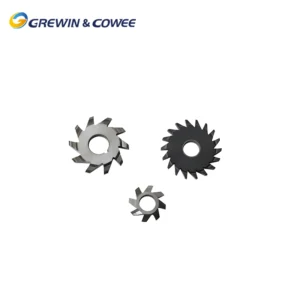Spis treści
Dźwignia kolankowaCircular Carbide Saw Blade
When it comes to woodworking and metalworking, selecting the right tools can significantly affect the quality and efficiency of the work. One essential tool that stands out in this arena is the tarcza tnąca z węglika spiekanego. Understanding how to choose the right circular carbide saw blade is crucial for anyone looking to achieve precise cuts and enhance their overall cutting experience. In this article, we will explore the different aspects of these blades and help you make an informed purchase that meets your specific cutting needs.
Understanding Circular Carbide Saw Blades
Circular carbide saw blades are designed for cutting through various materials, including wood, plastic, and metals. The primary component of these blades is carbide, a robust material known for its durability, sharpness, and longevity. Unlike standard saw blades, circular carbide saw blades maintain their edge far longer, reducing the frequency of replacements and ensuring cost savings over time.
For instance, if you’re engaged in a decking project that requires repetitive cutting of pressure-treated lumber, a high-quality circular carbide saw blade will result in smoother cuts and save you hours in labor compared to using traditional blades. This is just one example of how the right blade can enhance your productivity.
Key Features to Consider
To choose the right circular carbide saw blade, several factors need to be considered. Let’s break them down:
1. Material Compatibility
One of the most critical factors is the material you’ll be cutting. Circular carbide saw blades are available with different tooth configurations and materials suited for various tasks. For example, a blade designed for cutting hardwood may have a higher tooth count than one made for cutting softwood. A blade with 60 or more teeth is ideal for fine woodworking, ensuring smooth finishes on your project.
Conversely, if you are cutting through thicker metals, opt for a blade with fewer teeth (around 24) that is built to handle the stress of tough job applications. Each application requires different considerations to ensure that your efforts yield the best results.
2. Tooth Count and Configuration
As mentioned, the number of teeth on the blade directly impacts the type of cuts you can achieve. A circular carbide saw blade with a high tooth count produces smoother cuts suited for finishing work, while blades with fewer teeth will cut faster but may leave a rougher edge.
Consider this example: if you are producing pieces for furniture-making, a fine-toothed circular carbide saw blade would be the best choice. This blade will give you the precision you need for quality craftsmanship. In contrast, if you are working on structural beams or large timbers, a lower-tooth count blade will allow for quicker cuts without the same concern for finish quality.
3. Blade Diameter
Diameter affects the depth of the cut and the type of saw it can be paired with. Circular carbide saw blades come in various sizes, and knowing the correct diameter is crucial. For example, a 10-inch blade may be best suited for a table saw, which can make deeper cuts, while a 7-1/4 inch blade would work well with a handheld saw.
Choosing the right size not only affects performance but also ensures safety. A blade that is too large for your saw could lead to instability and the potential for accidents.
4. Arbor Size
The arbor size is another critical detail to observe when selecting your circular carbide saw blade. The arbor is the hole in the center of the blade that fits over the saw’s spindle. Always check that the arbor size of the blade matches that of your saw.
For instance, if your saw has a 5/8-inch arbor, choose a blade that accommodates this size. Using the wrong arbor could hinder blade performance, leading to poor cuts or even damage to your equipment.
5. Coating and Treatments
Some circular carbide saw blades come with special coatings that can enhance their performance and life expectancy. For example, a blade with a Teflon coating might resist pitch and debris build-up, making maintenance easier. A carbide-tipped blade, on the other hand, will offer increased durability in tough cutting scenarios.
Think about how often you plan to use your saw. If your projects are regular and demanding, investing in a coated circular carbide saw blade will save you time in blade maintenance and replacement.
Application Areas for Circular Carbide Saw Blades
Understanding application areas is essential for any buyer. Circular carbide saw blades are versatile and can be used in various settings:
Woodworking Shops:Ideal for both professional and hobbyist woodworkers, these blades allow for fine furniture making.
Metal Fabrication Shops:In managing metals around your warehouse, blades designed for cutting mild steel or aluminum can be beneficial.
Construction Sites:They can be utilized for cutting structural materials, aiding in tasks like framing or siding.
Each of these environments has its unique requirements, heightening the need for careful consideration when selecting your circular carbide saw blade.
Wniosek
Choosing the right circular carbide saw blade can vastly improve your cutting performance and extend the life of your tools. By considering factors like material compatibility, tooth count, blade diameter, arbor size, and coatings, you will be better equipped to make a knowledgeable decision that suits your needs. These blades offer considerable benefits in terms of durability and efficiency, making them an essential addition to your toolbox.
Remember, the quality of your work reflects not just your skill but also the tools you use. Take the time to select the right circular carbide saw blade, and you won’t be disappointed with the results. In the realm of woodworking and metalworking, every cut matters, and with the right blade, you can ensure they are precise, efficient, and professional.
